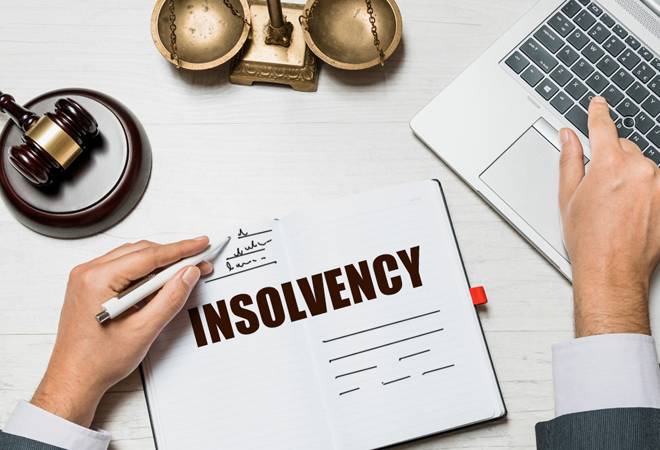9 Easy Facts About Insolvency Practitioner Explained
9 Easy Facts About Insolvency Practitioner Explained
Blog Article
Little Known Facts About Insolvency Practitioner.
Table of ContentsUnknown Facts About Insolvency PractitionerHow Insolvency Practitioner can Save You Time, Stress, and Money.Some Known Factual Statements About Insolvency Practitioner Insolvency Practitioner for BeginnersInsolvency Practitioner for BeginnersNot known Details About Insolvency Practitioner Some Known Details About Insolvency Practitioner
Insurance policy is checked and controlled by state insurance policy departments, and among their main purposes is securing policyholders from the threat of a business in economic distress. When a business gets in a period of economic difficulty and is incapable to meet its responsibilities, the insurance policy commissioner in the business's home state launches a processdictated by the laws of the statewhereby initiatives are made to aid the company reclaim its financial footing.If it is identified that the firm can not be rehabilitated, the firm is proclaimed financially troubled, and the commissioner will certainly ask the state court to purchase the liquidation of the business. The insurance coverage commissioner, either appointed by the guv or elected, heads the state insurance policy division and screens and controls insurance coverage activity within the state.
By getting control of a business, the commissioner (or the insurance division) is, by legislation, the rehabilitator or liquidator of the business. In this capability, the commissioner or department takes control of the firm's operations. Instead than do so straight, the commissioner may preserve an unique deputy receiver to manage the company's activities.
What Does Insolvency Practitioner Mean?
The receiver supervises a bookkeeping of the company's assets and responsibilities and carries out the estate of the business. In doing so, the receiver seeks to optimize the business's possessions, move them to cash, and after that distribute that cash to creditors having legitimate insurance claims versus the insurance company in accordance with repayment concerns specified by state legislation (in all states, insurance holders are top priority complaintants whose claims are paid before those of general creditors).
All insurance provider (with restricted exemptions) licensed to market life or medical insurance or annuities in a state must be members of that state's guaranty association. The warranty association complies with the commissioner and the receiver in pre-liquidation preparation. When the liquidation is purchased, the guaranty organization offers protection to the business's insurance policy holders that are state homeowners (approximately the degrees specified by state lawssee listed below; any type of benefit amounts over the warranty asociation benefit degrees become claims versus the firm's staying properties).
The above coverage degrees use separately for each insolvent insurance company. When an insurance provider stops working and there is a shortfall of funds required to fulfill the obligations to insurance holders, state guaranty associations are activated. Warranty organizations have subrogation civil liberties to a proportionate share of the properties continuing to be in the stopped working insurer.
Facts About Insolvency Practitioner Uncovered

NOLHGA establishes a job force of depictive warranty associations to collaborate with the insurance policy commissioner to develop a strategy to protect insurance holders. For additional information on NOLHGA's role while doing so, see "What Is NOLHGA?" and published here "The Safeguard at Job." [Back]
You are here: Insolvency is when a business or individual can not pay debts when they schedule. There are numerous alternatives available to an insolvent firm or person: ASIC manages firms, it does not handle individual insolvency treatments. To find out more about bankruptcy and individual insolvency arrangements, visit the Australian Financial Protection Authority site.
Insolvency Practitioner Things To Know Before You Get This
Predictive security by aiding you choose the best clients and the ideal markets to stay clear of negative financial obligation in the very first area, many thanks to read review intense economic evaluation - Insolvency Practitioner. Thorough market knowledge, giving you with 360-degree visibility on business industries and putting in jeopardy problems. It would be a simplification to believe a trade credit insurance begins and finishes with costs and pay-outs
This can take place for a variety of factors, consisting of bad monetary administration, unforeseen costs, or a change out there. If a business is insolvent, it may be compelled to shut down or liquidate possessions to pay lenders. This can have a major influence on business, employees, and investors.
It can bring about work losses, possession sales, and even bankruptcy. It is vital to understand just how business insolvency jobs and just how it can impact your service. Why does a business enter into insolvency? There are a variety of reasons that a firm might get in right into bankruptcy. One of the most typical reason is that the company is unable to pay its debts as they drop due.
Facts About Insolvency Practitioner Uncovered
Other factors for bankruptcy consist of fraudulence, mismanagement, and unanticipated prices. Bankruptcy can additionally lead to job losses and the closure of companies.
This can have major implications for the firm, its stakeholders, financial institutions and the economic climate. The company might be compelled to offer assets, gave up personnel or even shut down. This can have a ripple effect on the regional community and the economy overall. Creditors might be omitted of pocket and the business's shareholders may see their investment disappear.
This can happen for a variety of reasons, including inadequate financial monitoring, unexpected expenses, or an adjustment out there. If a company is financially troubled, it might be forced to shut down or sell off possessions to pay financial institutions. This can have a major effect on the organization, workers, and investors.
Indicators on Insolvency Practitioner You Need To Know
Why does a firm enter into bankruptcy? There are a my sources number of factors why a company may enter into insolvency.
Various other reasons for insolvency consist of scams, mismanagement, and unexpected prices. Bankruptcy can also lead to work losses and the closure of organizations.
The 25-Second Trick For Insolvency Practitioner

Report this page